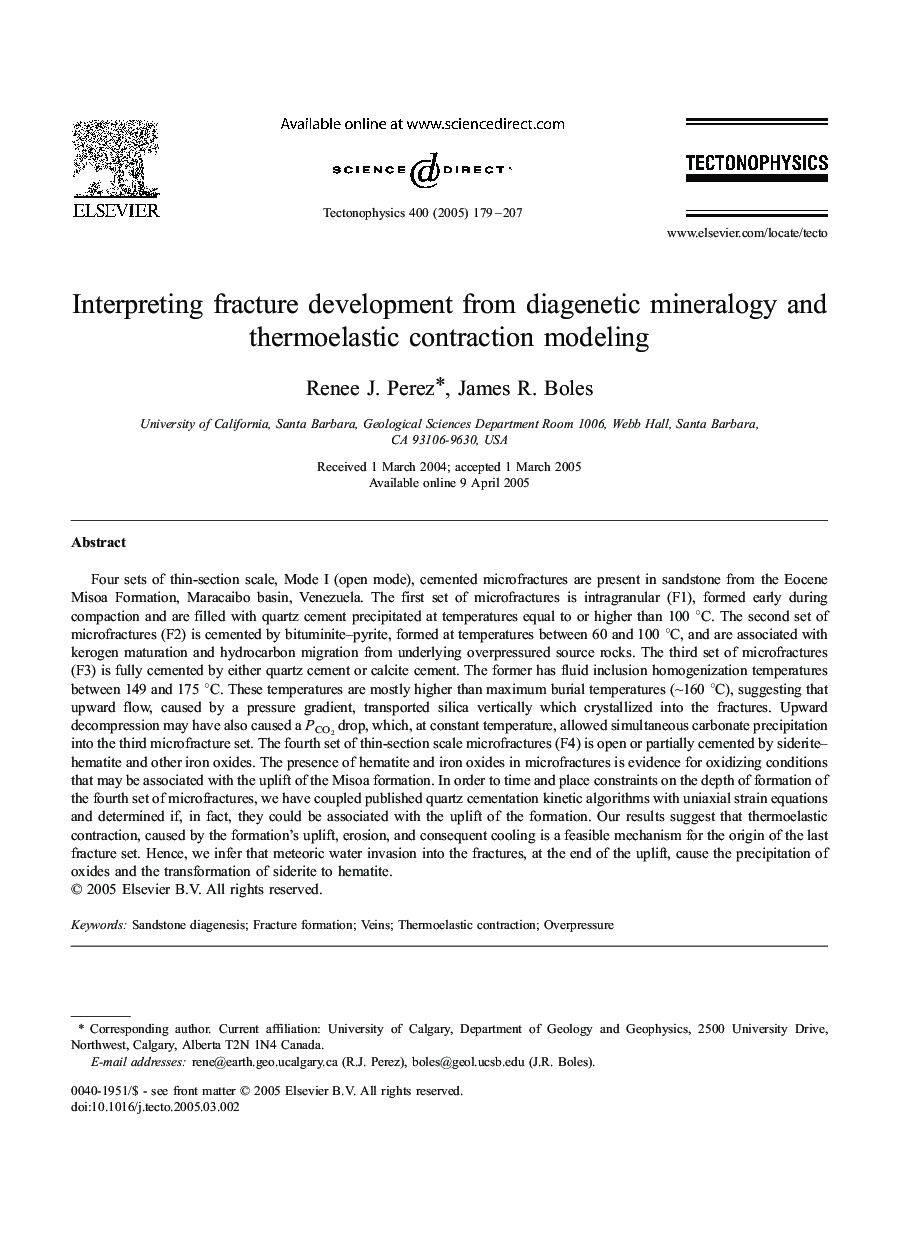| کد مقاله | کد نشریه | سال انتشار | مقاله انگلیسی | نسخه تمام متن |
|---|---|---|---|---|
| 9527048 | 1636982 | 2005 | 29 صفحه PDF | دانلود رایگان |
عنوان انگلیسی مقاله ISI
Interpreting fracture development from diagenetic mineralogy and thermoelastic contraction modeling
دانلود مقاله + سفارش ترجمه
دانلود مقاله ISI انگلیسی
رایگان برای ایرانیان
موضوعات مرتبط
مهندسی و علوم پایه
علوم زمین و سیارات
فرآیندهای سطح زمین
پیش نمایش صفحه اول مقاله

چکیده انگلیسی
Four sets of thin-section scale, Mode I (open mode), cemented microfractures are present in sandstone from the Eocene Misoa Formation, Maracaibo basin, Venezuela. The first set of microfractures is intragranular (F1), formed early during compaction and are filled with quartz cement precipitated at temperatures equal to or higher than 100 °C. The second set of microfractures (F2) is cemented by bituminite-pyrite, formed at temperatures between 60 and 100 °C, and are associated with kerogen maturation and hydrocarbon migration from underlying overpressured source rocks. The third set of microfractures (F3) is fully cemented by either quartz cement or calcite cement. The former has fluid inclusion homogenization temperatures between 149 and 175 °C. These temperatures are mostly higher than maximum burial temperatures (â¼160 °C), suggesting that upward flow, caused by a pressure gradient, transported silica vertically which crystallized into the fractures. Upward decompression may have also caused a PCO2 drop, which, at constant temperature, allowed simultaneous carbonate precipitation into the third microfracture set. The fourth set of thin-section scale microfractures (F4) is open or partially cemented by siderite-hematite and other iron oxides. The presence of hematite and iron oxides in microfractures is evidence for oxidizing conditions that may be associated with the uplift of the Misoa formation. In order to time and place constraints on the depth of formation of the fourth set of microfractures, we have coupled published quartz cementation kinetic algorithms with uniaxial strain equations and determined if, in fact, they could be associated with the uplift of the formation. Our results suggest that thermoelastic contraction, caused by the formation's uplift, erosion, and consequent cooling is a feasible mechanism for the origin of the last fracture set. Hence, we infer that meteoric water invasion into the fractures, at the end of the uplift, cause the precipitation of oxides and the transformation of siderite to hematite.
ناشر
Database: Elsevier - ScienceDirect (ساینس دایرکت)
Journal: Tectonophysics - Volume 400, Issues 1â4, 11 May 2005, Pages 179-207
Journal: Tectonophysics - Volume 400, Issues 1â4, 11 May 2005, Pages 179-207
نویسندگان
Renee J. Perez, James R. Boles,